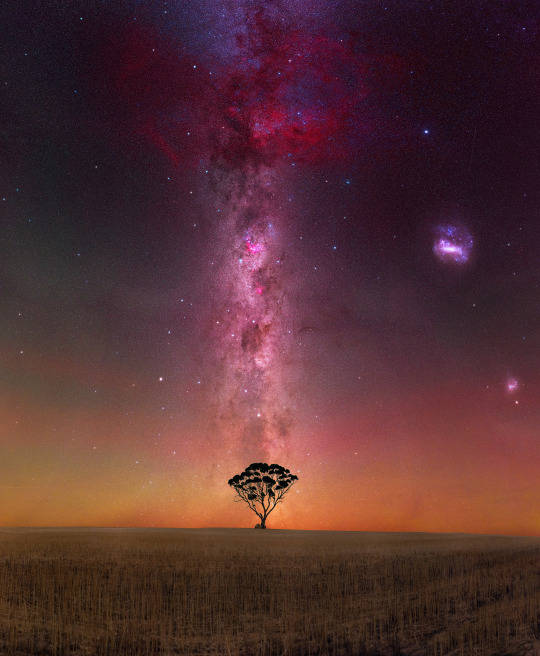I have a passion for pursuing truth. Truth in the Word of God. Truth in God's way of positive thinking. Truth in data. I am a firm believer that once a person knows the TRUTH, they will have a PASSION to pursue EXCELLENCE.
Don't wanna be here? Send us removal request.
Text

Spiral galaxy NGC 2566, 76 million light-years away in the constellation Puppis.
Credit: NASA/ ESA, Hubble
1K notes
·
View notes
Text

Hubble Spots a Spiral in the Celestial River by NASA Hubble Space Telescope
226 notes
·
View notes
Text

Wolf-Rayet 124 (NIRCam and MIRI composite image) by European Space Agency
427 notes
·
View notes
Text

Webb Researchers Discover Lensed Supernova, Confirm Hubble Tension by NASA's James Webb Space Telescope
103 notes
·
View notes
Text

Hubble Captures Unique Ultraviolet View of a Spectacular Star Cluster by NASA's Marshall Space Flight Center
3K notes
·
View notes
Text

Hubble Peers at Peculiar Galactic Pair by NASA Hubble Space Telescope
649 notes
·
View notes
Text

NGC 2264: Telescopes Illuminate ‘Christmas Tree Cluster’
656 notes
·
View notes
Text

Orion Nebula for Chandra's 25th Anniversary (Chandra/Webb composite) by NASA's James Webb Space Telescope
1K notes
·
View notes
Text
instagram
Hilarious! 🤣
1 note
·
View note
Photo

PHOTO OF THE WEEK
This week for Photo of the Week, we would like to feature a beautiful photo of the Milky Way over the Herron Point in Western Australia. Taken by the talented photographer Trevor Dobson, this amazing photo covers approximately 220 degrees of the night sky with the core of the galaxy setting to the west and the Magellanic Clouds visible to the south of the photo (left side). For more fantastic photos, be sure to check out Dobson’s Flickr at https://www.flickr.com/photos/trevor_dobson_inefekt69/
390 notes
·
View notes
Photo

Milky Way at York, Western Australia
Nikon d810a - 50mm - ISO 6400 - f/2.5 - Foreground: 7 x 30 seconds - Sky: 35 x 30 seconds - iOptron SkyTracker - Hoya Red Intensifier filter
7K notes
·
View notes
Photo




Galactic Center of Our Milky Way The Hubble Space Telescope, the Spitzer Space Telescope, and the Chandra X-ray Observatory — collaborated to produce an unprecedented image of the central region of our Milky Way galaxy. Observations using infrared light and X-ray light see through the obscuring dust and reveal the intense activity near the galactic core. The center of the galaxy is located within the bright white region in the upper portion of the image. The entire image covers about one-half a degree, about the same angular width as the full moon. Each telescope’s contribution is presented in a different color:
Yellow represents the near-infrared observations of Hubble. They outline the energetic regions where stars are being born as well as reveal hundreds of thousands of stars.
Red represents the infrared observations of Spitzer. The radiation and winds from stars create glowing dust clouds that exhibit complex structures from compact, spherical globules to long, stringy filaments.
Blue and violet represents the X-ray observations of Chandra. X-rays are emitted by gas heated to millions of degrees by stellar explosions and by outflows from the supermassive black hole in the galaxy’s center. The bright blue blob toward the bottom of the full field image is emission from a double star system containing either a neutron star or a black hole.
9K notes
·
View notes
Photo










As the Cassini mission to Saturn draws in to it’s final year, take a look at some of the most fantastic images from the ringed world.
Credits:
Image 1: NASA/JPL/Space Science Institute
Image 2: NASA/JPL-Caltech/Space Science Institute
Image 3: NASA/JPL-Caltech/SSI
Image 4: NASA/JPL/Space Science Institute
Image 5: NASA/JPL/Space Science Institute
Image 6: NASA/JPL-Caltech/Space Science Institute
Image 7: NASA/JPL-Caltech/Space Science Institute
Image 8: NASA/JPL/University of Arizona/University of Idaho
Image 9: NASA/JPL/ESA/University of Arizona
Image 10: NASA/JPL/Space Science Institute
669 notes
·
View notes
Text
Unveiling the Center of Our Milky Way Galaxy

We captured an extremely crisp infrared image of the center of our Milky Way galaxy. Spanning more than 600 light-years, this panorama reveals details within the dense swirls of gas and dust in high resolution, opening the door to future research into how massive stars are forming and what’s feeding the supermassive black hole at our galaxy’s core.

Among the features coming into focus are the jutting curves of the Arches Cluster containing the densest concentration of stars in our galaxy, as well as the Quintuplet Cluster with stars a million times brighter than our Sun. Our galaxy’s black hole takes shape with a glimpse of the fiery-looking ring of gas surrounding it.
The new view was made by the world’s largest airborne telescope, the Stratospheric Observatory for Infrared Astronomy, or SOFIA.
Make sure to follow us on Tumblr for your regular dose of space: http://nasa.tumblr.com.
3K notes
·
View notes


